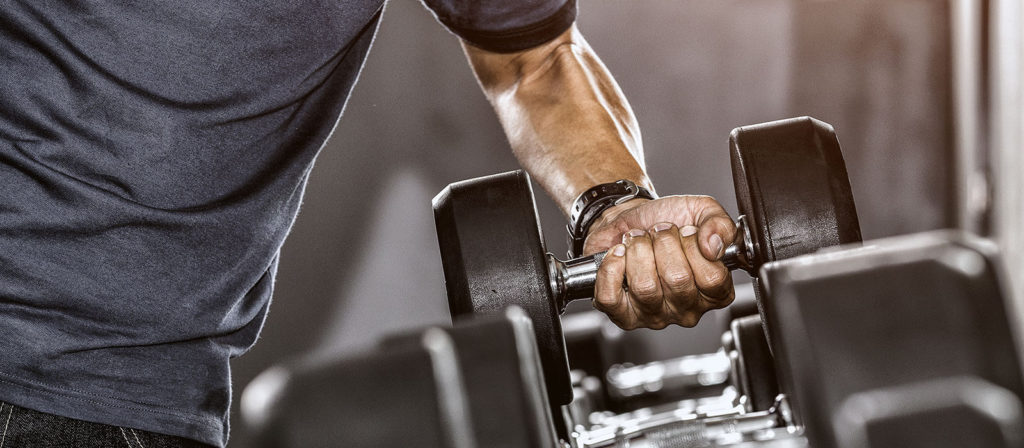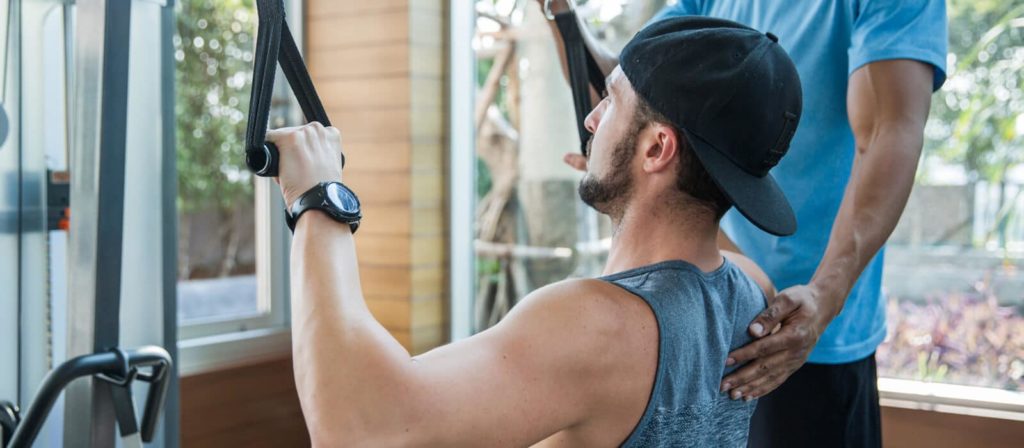On average, women have difficulty firing from their lat muscles. A majority of gross motor skills develop between the ages of 8 and 10. Unless you were a gymnast or spent a lot of time on the monkey bars, vertical pulling may not be a movement that comes naturally to you.
Women may also have a lack of relative strength, which is the measure of how strong you are in relation to your body weight. Improving body composition by adding muscle and decreasing body fat goes a long way towards completing your first pull-up, as does your diet.
Another issue holding people back from successful pull-ups is the tendency to only train what they see in the mirror. This means that people often train their anterior side more — after all, it’s what we see the majority of the time. But the muscles on the posterior side of your body, like your back, glutes, and hamstrings, are some of the biggest muscles in your body. They have the potential to become very strong if trained correctly.
The Perks of Pullups
Despite the difficulty you may have knocking out pull-ups by the set, it’s still an important exercise to master. It’s an exercise that comes loaded with fitness benefits. First of all, pull-ups help create a noticeably athletic look. They are a true test of strength that is very functional in day-to-day activities. It’s not a coincidence. In sports, strength coaches will tell you that the fastest, most explosive players on the field can also do the most pull-ps. The ability to do pull-ups means that your muscle- to body-fat ratio has improved.
While your overall body composition will certainly improve from doing pull-ups, your upper back muscles in particular will start to become more pronounced. Instead of falling into the trap of training what you see in the mirror, your shoulders will become healthier. If you overuse pressing exercises and neglect pulling exercises that strengthen your lats, upper traps, and rear delts, you’re setting yourself up for strength imbalances that will wear down your shoulder joints. Incorporating a mixture of vertical and horizontal pulling exercises like pull-ups and rows will go a long way toward keeping your shoulders strong and pain-free.
In addition to the physical benefits, women who can do pull-ups have a certain swagger about them. While self-confidence shouldn’t be based just on a person’s strength, getting your chin above the bar won’t make you feel bad about yourself, either.
5 Steps to Get Started
Over the years, I’ve developed a definitive strategy for helping females of all ages accomplish their first pull-up, which includes these four steps:
Step 1: Eccentric Pull-ups With a Neutral Grip
Focusing on the eccentric (or negative) part of the pull-up first will help you stay under tension long enough to strengthen your pulling muscles. Studies show that doing an exercise “in reverse” stimulates the nervous system into learning the exercise faster, which makes you more efficient at performing the movement.
To perform the step, go as slowly as possible on the decline and do as many sets as needed to reach a total time of two minutes. The goal is to slowly and evenly take 30 seconds from top to bottom; however, if you can only do 15 seconds when you start, then perform more sets to get to a full two minutes. Once you can perform three 30-second sets, move on to step two.
Step 2: Eccentric Pull-ups With Isometric Pauses (Neutral Grip)
To perform the next step, you’ll need to pause for 10 seconds at the top of the movement (chest to bar), for 10 seconds when your elbows are at 90 degrees, and finally, for 10 seconds at 20 degrees. These pauses, known as isometrics, are a great way to build strength at specific points throughout the range of motion.
These sticking points often get in the way of completing a pull-up, so tackle this exercise before moving into full-range versions. When you can complete four sets with perfect form, move on to step three.
Step 3: Neutral Grip Pull-ups
Once you can perform step three, you’re almost there! Technically, using a neutral grip does not constitute a traditional pull-up, but it’s a valuable part of the training process. Until this point, we’ve used a neutral grip on all versions because it’s easier for most people.
But by this point, you should be comfortable and confident enough on the bar to start in the bottom (fully stretched) position and pull yourself up until your chin clears the bar. When you can complete three neutral grip pullups perfectly, you’re ready to move on to step four.
Step 4: Pronated Pullups
When you reach step four, you should be ready to complete your first real pull-up! To perform the pull-up, take a shoulder-width grip with your palms facing away from you.
From the bottom, with your lats in a fully stretched position, drive your elbows down and back to initiate the pull from your lats, and pull yourself up until your chin is over the bar.
Bonus Tips:
- Maintain frequency: Frequency is the key to success, especially when it comes to exercise. I suggest training with these variations two to three times a week until you are able to progress to your first complete pul-lup. Most people will not be able to move up a step by only practicing once a week; for optimal results, try a Monday, Wednesday, and Friday schedule.
- Assistance exercises: Train using other upper back and bicep exercises twice a week after the pull-ups to reach your goal faster. Such exercises can include seated rows, chest-supported rows, dumbbell rows, trap 3, band pull-aparts, Zottman curls, and hammer curls, to name just a few.
- Diet appropriately: As I mentioned earlier, extra body fat can make pull-ups more difficult. Even a relatively minor weight loss might be all you need to be able to complete a pull-up! Make sure your diet is on point during this program; you’ll see success much faster.
You don’t have to become a pull-up aficionado to get the most of your workout. But successfully incorporating them into your regular workout routine can help you see the results you’ve been working so hard to achieve. If you struggle with one pull-up, much less a set, use this guide to help you raise the bar.






